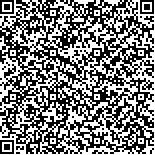下载中心
优秀审稿专家
优秀论文
相关链接
摘要

为进一步提高观测频次和信噪比,近年来各国新一代静止气象卫星均采用三轴稳定工作模式对地扫描成像。为了精确提取遥感目标物所在地点关于地表、云和大气状态的定量参数产品,必须要解决图像配准和定位问题。轨道漂移运动引起卫星视轴在地球表面上移动,导致连续图像之间产生相对位移,影响云图动画的图像配准精度。以2016年12月发射的中国风云四号卫星成像仪为研究对象,给出了图像参考基准的严密定义,研究了一种轨道运动补偿OMC(Orbit Motion Compensation)方法。通过给成像仪2维扫描机构增加转角补偿的方法在卫星上实时引导视线扫描路径,卫星相当于在理想轨道位置的视角成像。得到的遥感图像均被配准到地球固定网格FG(Fixed Grid),保持相对固定的几何定位关系。由于这种在卫星上完成的补偿剥离了L0级图像数据与卫星轨道测量信息之间的关系,从根源上保证了原始图像的长周期定位稳定性。为证明方法的正确性,利用风云四号卫星在轨测试的遥感图像L0级数据进行了试验验证。结果表明,云图动画中南北方向相对运动距离由973.0 μrad缩小至75.6 μrad,东西方向由205.8 μrad缩小至81.2 μrad。星上轨道运动补偿有效削弱了周期性轨道运动对图像定位与配准的干扰,显著提升图像配准精度。针对未来带有长线阵的新型静止卫星成像仪发展趋势,分析了进行星上轨道运动补偿时引起的长线阵探测器边缘像元误差问题,提出了采用电推进系统对卫星轨道倾角进行高精度保持控制来降低边缘误差的解决方案。
In recent years, a new generation of stationary meteorological satellites in various countries has adopted the three-axis stabilized mode of operation to scan the Earth for further improvement of observation frequency and signal–noise ratio. Image registration and navigation problems must be solved to accurately extract quantitative parameters of the Earth's surface, clouds, and atmosphere at remote sensing target locations. Orbital drift movement is one of the main causes of satellite line-of-sight movement on the Earth's surface. The relative movement generated between consecutive images affects the image registration accuracy of cloud animation.
In this study, the imager on the Chinese FY-4 satellite that was launched in December 2016 is used as the research object. Moreover, a strict definition of image reference is given, and an orbital motion compensation method (OMC) is studied. By adding scan compensation to the imager 2-D scanning mechanism, the scanning path of the line of sight is navigated on the satellite in real time. Satellites are equivalent to viewing at ideal orbital positions. As a result, satellite remote sensing images are accurately registered to the Earth-fixed grid, and a relatively fixed geometric relationship is maintained. The correlation between L0 data and the measurement information of satellite orbit is removed due to the compensation performed on the satellite. Therefore, the long-term registration stability of the original image is guaranteed from the root.
L0 remote sensing data from the FY-4 on-orbit test are used for experimental verification to prove the accuracy of the method. The results show that the relative movement of the north–south directions of the cloud animation is reduced from 973.0 μrad to 75.6 μrad (3σ) and that of the east–west direction is reduced from 205.8 μrad to 81.2 μrad (3σ).
The interference of the orbital motion on the image navigation and registration is effectively reduced by the OMC on the satellite. In view of the development trend of the future imager of the geostationary meteorological satellite, the problem of the edge pixel error of the long aperture array detector caused by satellite orbital motion compensation is analyzed. Furthermore, a solution to reduce the edge error by maintaining the satellite near 0° inclination using an electric propulsion system is proposed.

